My
List |
Addition Date
|
Target
|
Mission
|
Instrument
|
Size
|

|
2021-08-04 |
|
Hubble Space Telescope
Spitzer Space Telescope
|
Hubble Space Telescope
Spitzer Space Telescope
|
1780x1001x3 |
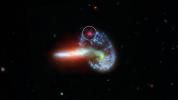
|
-
PIA24575:
-
Hidden Supernova Spotted by Spitzer
Full Resolution:
TIFF
(2.522 MB)
JPEG
(128.6 kB)
|

|
2020-01-08 |
|
Hubble Space Telescope
|
WFC3
|
1920x1280x3 |
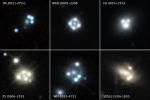
|
-
PIA23410:
-
Quasars' Multiple Images Shed Light on Tiny Dark Matter Clumps
Full Resolution:
TIFF
(3.504 MB)
JPEG
(114.3 kB)
|

|
2018-12-04 |
|
Hubble Space Telescope
|
WFC3
WFPC2
WFPC1
|
1881x627x3 |
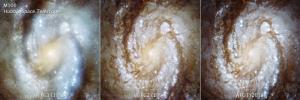
|
-
PIA22913:
-
M100 Through 3 Cameras
Full Resolution:
TIFF
(3.54 MB)
JPEG
(173 kB)
|

|
2018-06-15 |
|
Hubble Space Telescope
|
|
4763x3126x3 |
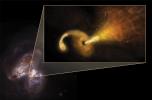
|
-
PIA22356:
-
A Tidal Disruption Event in Arp299B
Full Resolution:
TIFF
(24.23 MB)
JPEG
(946.7 kB)
|

|
2018-01-31 |
|
Hubble Space Telescope
Spitzer Space Telescope
|
|
1608x2048x3 |

|
-
PIA22092:
-
Arp 142: The Penguin and the Egg
Full Resolution:
TIFF
(6.359 MB)
JPEG
(144.5 kB)
|

|
2018-01-11 |
|
Hubble Space Telescope
|
|
1000x750x3 |
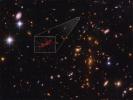
|
-
PIA22079:
-
NASA's Hubble Spots Embryonic Galaxy SPT0615-JD
Full Resolution:
TIFF
(2.083 MB)
JPEG
(107.9 kB)
|

|
2017-05-25 |
|
Hubble Space Telescope
|
Hubble Space Telescope
|
1800x1200x3 |
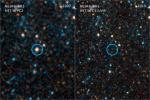
|
-
PIA21467:
-
Massive Star Goes Out With a Whimper Instead of a Bang
Full Resolution:
TIFF
(6.144 MB)
JPEG
(275.2 kB)
|

|
2016-02-18 |
|
Hubble Space Telescope
|
|
3600x4500x3 |

|
-
PIA16033:
-
Artist's View of a Super-Jupiter around a Brown Dwarf (2M1207)
Full Resolution:
TIFF
(8.77 MB)
JPEG
(420 kB)
|

|
2016-01-28 |
|
Hubble Space Telescope
|
|
1886x3000x3 |

|
-
PIA16024:
-
Monstrous Cloud Boomerangs Back to Our Galaxy (Artist's Concept)
Full Resolution:
TIFF
(9.49 MB)
JPEG
(601.9 kB)
|

|
2016-01-21 |
|
Hubble Space Telescope
|
Advanced Camera for Surveys
|
3906x3906x3 |
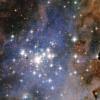
|
-
PIA20468:
-
Hubble Unveils a Tapestry of Dazzling Diamond-Like Stars
Full Resolution:
TIFF
(45.79 MB)
JPEG
(1.43 MB)
|

|
2015-12-17 |
|
Hubble Space Telescope
|
|
1028x1218x3 |

|
-
PIA16022:
-
Hubble Sees the Force Awakening in a Newborn Star
Full Resolution:
TIFF
(3.517 MB)
JPEG
(85.05 kB)
|

|
2015-12-17 |
|
Hubble Space Telescope
NuSTAR
|
|
2948x2321x3 |
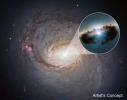
|
-
PIA20058:
-
Hidden Lair at the Heart of Galaxy NGC 1068
Full Resolution:
TIFF
(20.54 MB)
JPEG
(870.1 kB)
|

|
2015-12-17 |
|
Hubble Space Telescope
NuSTAR
|
|
2888x2880x3 |
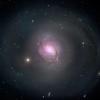
|
-
PIA20057:
-
NuSTAR's View of Galaxy NGC 1068
Full Resolution:
TIFF
(18.53 MB)
JPEG
(305.8 kB)
|

|
2015-12-03 |
|
Hubble Space Telescope
Spitzer Space Telescope
|
WFC3
|
4169x4633x3 |

|
-
PIA20054:
-
Faint Compact Galaxy in the Early Universe
Full Resolution:
TIFF
(53.34 MB)
JPEG
(2.758 MB)
|

|
2015-09-10 |
|
Hubble Space Telescope
Spitzer Space Telescope
|
|
2200x2201x3 |
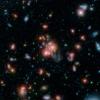
|
-
PIA19837:
-
What Feeds the Beast in a Galaxy Cluster?
Full Resolution:
TIFF
(10.61 MB)
JPEG
(430.2 kB)
|

|
2015-02-10 |
|
Hubble Space Telescope
|
WFPC2
|
758x748x3 |
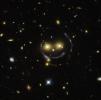
|
-
PIA18794:
-
Smile, and the Universe Smiles With You
Full Resolution:
TIFF
(1.702 MB)
JPEG
(37.58 kB)
|

|
2015-01-08 |
|
Hubble Space Telescope
NuSTAR
|
|
9000x3000x3 |
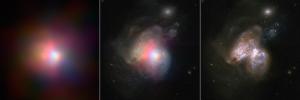
|
-
PIA18907:
-
Tale of Two Black Holes
Full Resolution:
TIFF
(81.02 MB)
JPEG
(3.67 MB)
|

|
2014-11-06 |
|
CIBER
Hubble Space Telescope
Spitzer Space Telescope
|
|
4000x2000x3 |
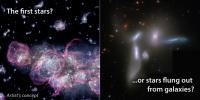
|
-
PIA18851:
-
First Stars or Stray Stars? A Cosmic Infrared Mystery
Full Resolution:
TIFF
(24.01 MB)
JPEG
(840.9 kB)
|

|
2014-09-19 |
|
Hubble Space Telescope
|
WFPC2
|
1280x686x3 |
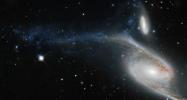
|
-
PIA17808:
-
Hubble Feathers the Peacock
Full Resolution:
TIFF
(2.635 MB)
JPEG
(101.2 kB)
|

|
2014-08-27 |
|
Hubble Space Telescope
Spitzer Space Telescope
|
|
3000x2000x3 |
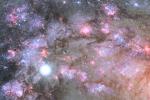
|
-
PIA18471:
-
A Cauldron of Star Birth in the Center of a Young Galaxy (Artist's Concept)
Full Resolution:
TIFF
(18.01 MB)
JPEG
(1.482 MB)
|

|
2014-07-02 |
|
Chandra X-ray Observatory
Hubble Space Telescope
Spitzer Space Telescope
Very Large Array (VLA)
|
|
3600x2812x3 |
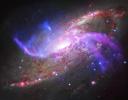
|
-
PIA18461:
-
Galactic Pyrotechnics on Display
Full Resolution:
TIFF
(30.38 MB)
JPEG
(1.396 MB)
|

|
2014-04-29 |
|
Herschel Space Observatory
Hubble Space Telescope
|
HIFI
WFC3
|
1000x712x3 |
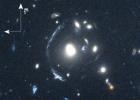
|
-
PIA18004:
-
Smeared and Magnified Galaxy
Full Resolution:
TIFF
(2.137 MB)
JPEG
(93.48 kB)
|

|
2014-02-07 |
|
Hubble Space Telescope
Spitzer Space Telescope
|
|
2416x1080x3 |
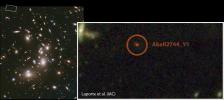
|
-
PIA17837:
-
Pushing the Limits of the Observable Universe
Full Resolution:
TIFF
(7.831 MB)
JPEG
(227.1 kB)
|

|
2014-01-07 |
|
Hubble Space Telescope
|
Hubble Space Telescope
|
1148x1280x3 |

|
-
PIA17569:
-
Hubble Frontier Field Abell 2744
Full Resolution:
TIFF
(4.41 MB)
JPEG
(105.4 kB)
|

|
2013-12-12 |
|
Herschel Space Observatory
Hubble Space Telescope
|
PACS
WFPC2
|
3864x3864x3 |
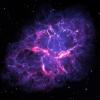
|
-
PIA17563:
-
Crab Nebula, as Seen by Herschel and Hubble
Full Resolution:
TIFF
(44.81 MB)
JPEG
(1.205 MB)
|

|
2013-11-26 |
|
Hubble Space Telescope
|
|
660x308x3 |
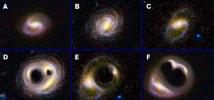
|
-
PIA17559:
-
Warped Galaxies Quiz
Full Resolution:
TIFF
(610.3 kB)
JPEG
(35.18 kB)
|

|
2013-04-23 |
|
Hubble Space Telescope
Wide-field Infrared Survey Explorer (WISE)
|
WISE Telescope
|
4095x2842x3 |
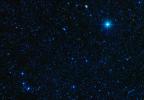
|
-
PIA17005:
-
Galaxy Packs Big Star-Making Punch
Full Resolution:
TIFF
(34.93 MB)
JPEG
(1.316 MB)
|

|
2013-04-03 |
|
Chandra X-ray Observatory
Hubble Space Telescope
Spitzer Space Telescope
|
Chandra X-ray Telescope
IRAC
Visible-Light
|
3600x3600x3 |
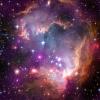
|
-
PIA16884:
-
Taken Under the 'Wing' of the Small Magellanic Cloud
Full Resolution:
TIFF
(38.89 MB)
JPEG
(1.685 MB)
|

|
2012-12-13 |
|
Chandra X-ray Observatory
Hubble Space Telescope
Spitzer Space Telescope
Very Large Space Telescope (VLT)
|
|
3600x3600x3 |
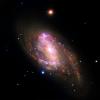
|
-
PIA15806:
-
NGC 3627: Revealing Hidden Black Holes
Full Resolution:
TIFF
(38.89 MB)
JPEG
(646 kB)
|

|
2012-11-15 |
|
Hubble Space Telescope
|
Advanced Camera for Surveys
WFC3
|
1578x1520x3 |
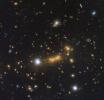
|
-
PIA16465:
-
Astronomers Spot Most Distant Known Galaxy
Full Resolution:
TIFF
(7.198 MB)
JPEG
(305.8 kB)
|

|
2012-06-26 |
|
Hubble Space Telescope
|
Advanced Camera for Surveys
WFC3
|
1485x1045x3 |
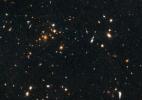
|
-
PIA15803:
-
Galaxy Cluster and Giant Arc
Full Resolution:
TIFF
(4.657 MB)
JPEG
(195.2 kB)
|

|
2012-06-19 |
|
Hubble Space Telescope
|
WFC3
|
761x761x3 |
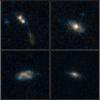
|
-
PIA15831:
-
The Homes of Quasars
Full Resolution:
TIFF
(1.738 MB)
JPEG
(64.82 kB)
|

|
2012-03-16 |
|
Hubble Space Telescope
|
WFC3
|
1057x528x3 |
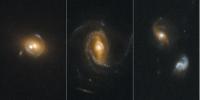
|
-
PIA15418:
-
Quasar Lenses
Full Resolution:
TIFF
(1.677 MB)
JPEG
(61.94 kB)
|

|
2011-12-21 |
|
Hubble Space Telescope
Spitzer Space Telescope
|
Hubble Space Telescope
Spizter Space Telescope
|
1200x998x3 |
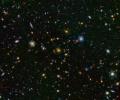
|
-
PIA15251:
-
Distant Galaxy Bursts with Stars
Full Resolution:
TIFF
(3.597 MB)
JPEG
(146.2 kB)
|

|
2010-11-19 |
|
Hubble Space Telescope
Spitzer Space Telescope
|
IRAC
|
1800x1800x3 |
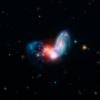
|
-
PIA13632:
-
Shrouded Starburst
Full Resolution:
TIFF
(9.735 MB)
JPEG
(195.5 kB)
|

|
2010-11-11 |
|
Hubble Space Telescope
|
Advanced Camera for Surveys
|
1249x1280x3 |

|
-
PIA13616:
-
Shedding 'Bent' Light on Dark Matter
Full Resolution:
TIFF
(4.802 MB)
JPEG
(132.9 kB)
|

|
2010-08-11 |
|
Galaxy Evolution Explorer (GALEX)
Hubble Space Telescope
|
Ultraviolet/Visible Camera
|
2400x1600x3 |
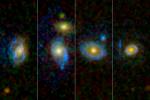
|
-
PIA13318:
-
Ultraviolet Ring Around the Galaxies
Full Resolution:
TIFF
(11.53 MB)
JPEG
(192.2 kB)
|

|
2009-11-10 |
|
Chandra X-ray Observatory
Hubble Space Telescope
Spitzer Space Telescope
|
IRAC
|
9725x4862x3 |
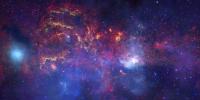
|
-
PIA12348:
-
Great Observatories' Unique Views of the Milky Way
Full Resolution:
TIFF
(141.8 MB)
JPEG
(3.839 MB)
|

|
2009-02-10 |
Messier 101
|
Hubble Space Telescope
Spitzer Space Telescope
|
Chandra X-ray Telescope
IRAC
Visible Light
|
7200x7200x3 |
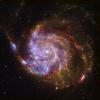
|
-
PIA11797:
-
NASA's Great Observatories Celebrate the International Year of Astronomy
Full Resolution:
TIFF
(155.5 MB)
JPEG
(6.529 MB)
|

|
2009-02-10 |
Messier 101
|
Hubble Space Telescope
Spitzer Space Telescope
|
IRAC
|
7200x7200x3 |
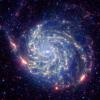
|
-
PIA11796:
-
Spitzer Space Telescope's View of Galaxy Messier 101
Full Resolution:
TIFF
(155.5 MB)
JPEG
(2.86 MB)
|

|
2008-08-10 |
|
Hubble Space Telescope
|
WFPC2
|
1502x1482x3 |
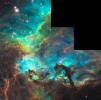
|
-
PIA10957:
-
Hubble Unveils Colorful and Turbulent Star-Birth Region on 100,000th Orbit Milestone
Full Resolution:
TIFF
(6.69 MB)
JPEG
(245.8 kB)
|

|
2008-07-01 |
|
Hubble Space Telescope
|
Advanced Camera for Surveys
WFPC2
|
1280x1188x3 |
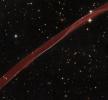
|
-
PIA10926:
-
Hubble Sees Stars and a Stripe in Celestial Fireworks
Full Resolution:
TIFF
(4.567 MB)
JPEG
(158.8 kB)
|

|
2008-04-24 |
|
Hubble Space Telescope
|
WFPC2
|
3038x1580x3 |
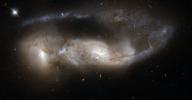
|
-
PIA10393:
-
NGC 6621/2
Full Resolution:
TIFF
(14.4 MB)
JPEG
(509.2 kB)
|

|
2008-04-24 |
|
Hubble Space Telescope
|
WFPC2
|
3271x1828x3 |
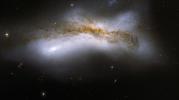
|
-
PIA10390:
-
NGC 520
Full Resolution:
TIFF
(17.94 MB)
JPEG
(736.3 kB)
|

|
2008-04-24 |
|
Hubble Space Telescope
|
WFPC2
|
1660x1660x3 |
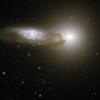
|
-
PIA10389:
-
AM 1316-241
Full Resolution:
TIFF
(8.28 MB)
JPEG
(365.6 kB)
|

|
2008-04-24 |
|
Hubble Space Telescope
|
WFPC2
|
1669x1669x3 |
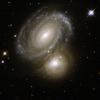
|
-
PIA10388:
-
AM 0500-620 - Spiral Arms and Bright Knots
Full Resolution:
TIFF
(8.37 MB)
JPEG
(305.4 kB)
|

|
2008-04-24 |
|
Hubble Space Telescope
|
WFPC2
|
1052x1052x3 |
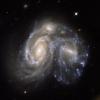
|
-
PIA10387:
-
Collision Between Two Spiral Galaxies
Full Resolution:
TIFF
(3.325 MB)
JPEG
(97.32 kB)
|

|
2008-04-24 |
|
Hubble Space Telescope
|
WFPC2
|
2289x2289x3 |
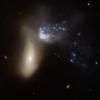
|
-
PIA10386:
-
NGC 454
Full Resolution:
TIFF
(15.74 MB)
JPEG
(638.6 kB)
|

|
2008-04-24 |
|
Hubble Space Telescope
|
WFPC2
|
1027x1027x3 |
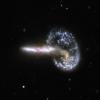
|
-
PIA10385:
-
Arp 148& - Mayall's Object
Full Resolution:
TIFF
(3.169 MB)
JPEG
(75.74 kB)
|

|
2008-02-12 |
Abell 1689
|
Hubble Space Telescope
Spitzer Space Telescope
|
Advanced Camera for Surveys
Infrared Array Camera (IRAC)
NICMOS
|
3813x3367x3 |
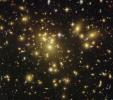
|
-
PIA10237:
-
Astronomers Uncover One of the Youngest and Brightest Galaxies in the Early Universe
Full Resolution:
TIFF
(38.52 MB)
JPEG
(3.231 MB)
|

|
2007-06-01 |
Messier 81
|
Galaxy Evolution Explorer (GALEX)
Hubble Space Telescope
Spitzer Space Telescope
|
GALEX Telescope
Infrared Array Camera (IRAC)
Visible Light
|
3180x2456x3 |
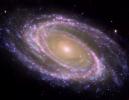
|
-
PIA09579:
-
M81 Galaxy is Pretty in Pink
Full Resolution:
TIFF
(23.43 MB)
JPEG
(1.061 MB)
|

|
2007-02-13 |
|
Hubble Space Telescope
|
WFPC2
|
1241x1207x3 |
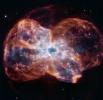
|
-
PIA09194:
-
The Colorful Demise of a Sun-like Star
Full Resolution:
TIFF
(4.499 MB)
JPEG
(153.6 kB)
|

|
2006-07-21 |
|
Hubble Space Telescope
Spitzer Space Telescope
|
IRAC
Visible Light
|
900x360x3 |
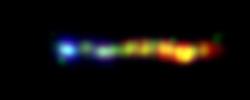
|
-
PIA08617:
-
Black Hole Spills Kaleidoscope of Color
Full Resolution:
TIFF
(973.2 kB)
JPEG
(10.56 kB)
|

|
2006-06-06 |
|
Hubble Space Telescope
Spitzer Space Telescope
|
IRAC
Multiband Imaging Photometer (MIPS)
|
1778x1778x3 |
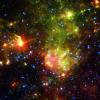
|
-
PIA08516:
-
Dusty Death of a Massive Star
Full Resolution:
TIFF
(9.498 MB)
JPEG
(553.1 kB)
|

|
2006-04-24 |
M82 Galaxy
|
Hubble Space Telescope
Spitzer Space Telescope
|
Chandra X-ray Telescope
Infrared Array Camera (IRAC)
Visible Light
|
640x480x3 |
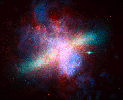
|
-
PIA08093:
-
Great Observatories Present Rainbow of a Galaxy

Full Resolution:
TIFF
(45.01 MB)
JPEG
(799.8 kB)
|

|
2006-01-11 |
Cartwheel Galaxy
|
Galaxy Evolution Explorer (GALEX)
Hubble Space Telescope
Spitzer Space Telescope
|
Chandra X-ray Telescope
GALEX Telescope
Infrared Array Camera (IRAC)
Visible Light
|
1500x1500x3 |
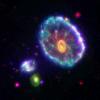
|
-
PIA03296:
-
A Stellar Ripple
Full Resolution:
TIFF
(6.762 MB)
JPEG
(201.2 kB)
|

|
2005-09-27 |
HUDF-JD2
|
Hubble Space Telescope
Spitzer Space Telescope
|
IRAC
Visible Light
|
2699x1838x3 |
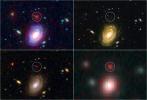
|
-
PIA03542:
-
Big Galaxy in Baby Universe
Full Resolution:
TIFF
(14.9 MB)
JPEG
(647.4 kB)
|

|
2005-05-05 |
|
Hubble Space Telescope
|
Visible Light
|
3000x1681x3 |
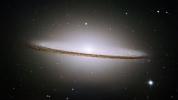
|
-
PIA15226:
-
Hubble Spies Spectacular Sombrero
Full Resolution:
TIFF
(15.13 MB)
JPEG
(427.2 kB)
|

|
2005-05-04 |
Messier 104
|
Hubble Space Telescope
Spitzer Space Telescope
|
IRAC
Visible Light
|
3000x1681x3 |
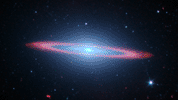
|
-
PIA07899:
-
Spitzer Spies Spectacular Sombrero

Full Resolution:
TIFF
(15.13 MB)
JPEG
(214.2 kB)
|

|
2004-10-06 |
|
Hubble Space Telescope
Spitzer Space Telescope
|
Chandra X-ray Telescope
Hubble Space Telescope
Spitzer Space Telescope
|
750x750x3 |
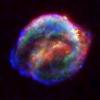
|
-
PIA06907:
-
Three Great Eyes on Kepler's Supernova
Remnant
Full Resolution:
TIFF
(1.453 MB)
JPEG
(33.78 kB)
|

|
2004-02-03 |
|
Hubble Space Telescope
|
WFPC2
|
1065x771x3 |
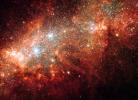
|
-
PIA05202:
-
Supernova Blast Bonanza in Nearby Galaxy
Full Resolution:
TIFF
(2.467 MB)
JPEG
(177.7 kB)
|

|
2003-07-03 |
|
Hubble Space Telescope
|
WFPC2
|
2603x2783x3 |

|
-
PIA04609:
-
Celestial Fireworks
Full Resolution:
TIFF
(13.8 MB)
JPEG
(871.3 kB)
|

|
1999-12-30 |
Edge-on Galaxy ESO 510 G13
|
Hubble Space Telescope
|
WFPC2
|
1435x732x3 |
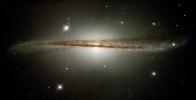
|
-
PIA04213:
-
Edge-on Galaxy
Full Resolution:
TIFF
(2.843 MB)
JPEG
(100.8 kB)
|

|
1999-12-15 |
Galaxy NGC 4013
|
Hubble Space Telescope
|
WFPC2
|
1041x1018x3 |
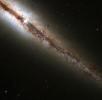
|
-
PIA04217:
-
Galaxy NGC 4013
Full Resolution:
TIFF
(2.811 MB)
JPEG
(74.83 kB)
|

|
1999-12-10 |
Hubble -V
|
Hubble Space Telescope
|
WFPC2
|
640x800x3 |

|
-
PIA04222:
-
Hubble-V
Full Resolution:
TIFF
(1.065 MB)
JPEG
(77.99 kB)
|

|
1999-12-07 |
Galaxy NGC 3310
|
Hubble Space Telescope
|
WFPC2
|
849x933x3 |

|
-
PIA04229:
-
Starburst Galaxy NGC 3310
Full Resolution:
TIFF
(1.858 MB)
JPEG
(102.3 kB)
|

|
1999-12-04 |
Whirlpool Galaxy
|
Hubble Space Telescope
|
WFPC2
|
648x809x3 |

|
-
PIA04230:
-
Whirlpool Galaxy
Full Resolution:
TIFF
(1.575 MB)
JPEG
(84.45 kB)
|

|
1999-12-03 |
N44C nebula
|
Hubble Space Telescope
|
WFPC2
|
1460x1502x3 |

|
-
PIA04225:
-
N44C Nebula
Full Resolution:
TIFF
(6.034 MB)
JPEG
(275.2 kB)
|

|
1999-12-03 |
Galaxy NGC 1850
|
Hubble Space Telescope
|
WFPC2
|
758x580x3 |
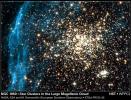
|
-
PIA04221:
-
Galaxy NGC 1850
Full Resolution:
TIFF
(1.321 MB)
JPEG
(140.6 kB)
|

|
1999-12-02 |
Orion Nebula
|
Hubble Space Telescope
|
WFPC2
|
1074x895x3 |

|
-
PIA04227:
-
Orion Nebula and Bow Shock
Full Resolution:
TIFF
(2.805 MB)
JPEG
(61.4 kB)
|

|
1999-12-02 |
M82 Galaxy
|
Hubble Space Telescope
|
WFPC2
|
1487x1522x3 |

|
-
PIA04218:
-
Galaxy M82
Full Resolution:
TIFF
(5.39 MB)
JPEG
(187.4 kB)
|

|
1999-12-02 |
Galaxy NGC 3079
|
Hubble Space Telescope
|
WFPC2
|
2329x1845x3 |
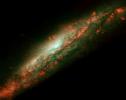
|
-
PIA04209:
-
Galaxy NGC 3079
Full Resolution:
TIFF
(5.519 MB)
JPEG
(351.2 kB)
|

|
1999-12-02 |
Galaxy NGC 3079
|
Hubble Space Telescope
|
WFPC2
|
434x434x3 |
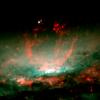
|
-
PIA04208:
-
Galaxy NGC 3079
Full Resolution:
TIFF
(305.3 kB)
JPEG
(22.15 kB)
|

|
1999-12-02 |
Stephan's Quintet,NGC 7319, NGC 7318B, NGC 7318A
|
Hubble Space Telescope
|
WFPC2
|
2400x3000x3 |

|
-
PIA04201:
-
Stephan's Quintet
Full Resolution:
TIFF
(12.15 MB)
JPEG
(521 kB)
|

|
1999-12-01 |
Globular cluster M4
|
Hubble Space Telescope
|
WFPC2
|
1100x1237x3 |

|
-
PIA04231:
-
White Dwarf Stars
Full Resolution:
TIFF
(3.34 MB)
JPEG
(279.1 kB)
|

|
1999-12-01 |
Galaxy NGC 4622
|
Hubble Space Telescope
|
WFPC2
|
853x970x3 |

|
-
PIA04224:
-
Backwards Spiral Galaxy
Full Resolution:
TIFF
(2.485 MB)
JPEG
(97.62 kB)
|

|
1999-12-01 |
Galaxy NGC 1512
|
Hubble Space Telescope
|
WFPC2
Faint Object Camera
Near Infrared Camera
Multi-Object Spectrometer
|
600x650x3 |

|
-
PIA04219:
-
Galaxy NGC 1512
Full Resolution:
TIFF
(972.2 kB)
JPEG
(50.1 kB)
|

|
1999-12-01 |
Globular cluster M22
|
Hubble Space Telescope
|
WFPC2
|
514x600x3 |

|
-
PIA04202:
-
Globular Cluster M22
Full Resolution:
TIFF
(926.4 kB)
JPEG
(94.12 kB)
|

|
1999-12-01 |
Doradus Nebula
|
Hubble Space Telescope
|
WFPC2
|
2508x1790x3 |
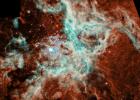
|
-
PIA04200:
-
Doradus Nebula
Full Resolution:
TIFF
(12.24 MB)
JPEG
(608.9 kB)
|

|
1996-01-15 |
|
Hubble Space Telescope
|
WFPC2
|
1771x1819x3 |

|
-
PIA12110:
-
Hubble Deep Field Image Unveils Myriad Galaxies Back to the Beginning of Time
Full Resolution:
TIFF
(9.679 MB)
JPEG
(1.226 MB)
|

 Planetary Data System
Planetary Data System




























































































